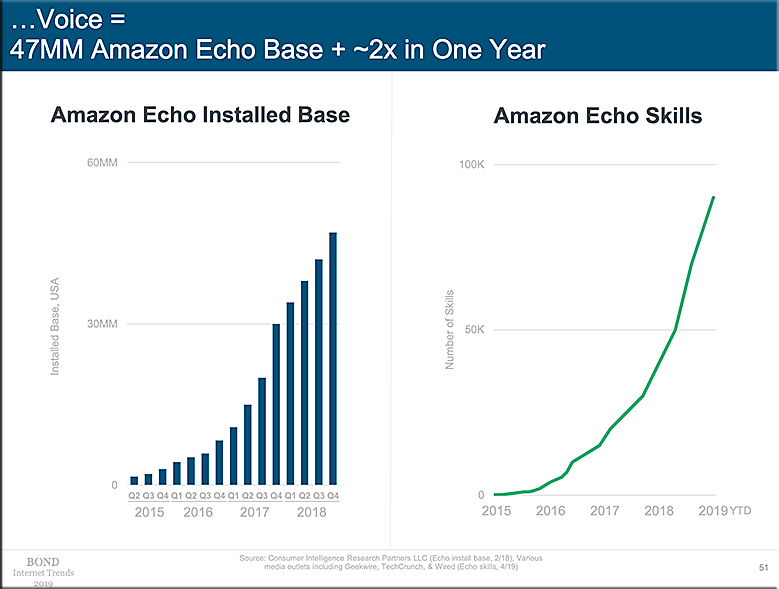Excerpts:



From DSC:
That last one reminded me of why I think the Living from the Living [Class] Room vision is so powerful…
Is this South Africa’s best legal online platform using blockchain? — from techfinancials.co.za
The winners of the event, Kagiso, will progress to the second round of the contest, in which a panel of international judges will decide who attends a grand final in New York.
Excerpt:
The Hague Institute for Innovation of Law (HiiL) and leading global law firm Baker McKenziehave announced the winners of the South African leg of Global Legal Hackathon 2019 (GLH2019).
First prize went to Kagiso, an online mediation platform that provides a cost-effective and fast alternative to lengthy court processes for civil disputes.
Kagiso uses machine learning to match cases with professional mediators who have the most relevant skill sets to be effective – such as subject matter experience or knowledge of local languages – and stores records using blockchain technology.
The second prize was awarded to Bua, a voice-recognition system that allows victims of crime to record their own statements in their own language in a private “safe space” such as a kiosk or on their own phone.
The majority of crimes in South Africa’s go unreported or prosecutions fail, and a leading reason is that victims don’t feel comfortable giving statements in open police stations, and statements are often badly or wilfully mistranslated.
The Global Legal Hackathon is a non-profit organization that organizes law schools, law firms and in-house departments, legal technology companies, governments, and service providers to innovation in the legal industry – across the globe. It brings together the best thinkers, doers and practitioners in law in support of a unified vision: rapid development of solutions to improve the legal industry, world-wide.
From DSC:
Glancing through the awards likely shows where the future of the legal field is going…at least in part.
Also see:
India Just Swore in Its First Robot Police Officer — from futurism.com by Dan Robitzski
RoboCop, meet KP-Bot.
Excerpt:
RoboCop
India just swore in its first robotic police officer, which is named KP-Bot.
The animatronic-looking machine was granted the rank of sub-inspector on Tuesday, and it will operate the front desk of Thiruvananthapuram police headquarters, according to India Today.
From DSC:
Whoa….hmmm…note to the ABA and to the legal education field — and actually to anyone involved in developing laws — we need to catch up. Quickly.
My thoughts go to the governments and to the militaries around the globe. Are we now on a slippery slope? How far along are the militaries of the world in integrating robotics and AI into their weapons of war? Quite far, I think.
Also, at the higher education level, are Computer Science and Engineering Departments taking their responsibilities seriously in this regard? What kind of teaching is being done (or not done) in terms of the moral responsibilities of their code? Their robots?
Acts 10:34-35 New International Version (NIV) — from biblegateway.com
34 Then Peter began to speak: “I now realize how true it is that God does not show favoritism 35 but accepts from every nation the one who fears him and does what is right.
What is 5G? Everything you need to know — from techradar.com by Mike Moore
The latest news, views and developments in the exciting world of 5G networks.
Excerpt:
What is 5G?
5G networks are the next generation of mobile internet connectivity, offering faster speeds and more reliable connections on smartphones and other devices than ever before.
Combining cutting-edge network technology and the very latest research, 5G should offer connections that are multitudes faster than current connections, with average download speeds of around 1GBps expected to soon be the norm.
The networks will help power a huge rise in Internet of Things technology, providing the infrastructure needed to carry huge amounts of data, allowing for a smarter and more connected world.
With development well underway, 5G networks are expected to launch across the world by 2020, working alongside existing 3G and 4G technology to provide speedier connections that stay online no matter where you are.
So with only a matter of months to go until 5G networks are set to go live, here’s our run-down of all the latest news and updates.
From DSC:
I wonder…
Elon Musk receives FCC approval to launch over 7,500 satellites into space — from digitaltrends.com by Kelly Hodgkins
Excerpt (emphasis DSC):
The FCC this week unanimously approved SpaceX’s ambitious plan to launch 7,518 satellites into low-Earth orbit. These satellites, along with 4,425 previously approved satellites, will serve as the backbone for the company’s proposed Starlink broadband network. As it does with most of its projects, SpaceX is thinking big with its global broadband network. The company is expected to spend more than $10 billion to build and launch a constellation of satellites that will provide high-speed internet coverage to just about every corner of the planet.
To put this deployment in perspective, there are currently only 1,886 active satellites presently in orbit. These new SpaceX satellites will increase the number of active satellites six-fold in less than a decade.
New simulation shows how Elon Musk’s internet satellite network might work — from digitaltrends.com by Luke Dormehl
Excerpt:
From Tesla to Hyperloop to plans to colonize Mars, it’s fair to say that Elon Musk thinks big. Among his many visionary ideas is the dream of building a space internet. Called Starlink, Musk’s ambition is to create a network for conveying a significant portion of internet traffic via thousands of satellites Musk hopes to have in orbit by the mid-2020s. But just how feasible is such a plan? And how do you avoid them crashing into one another?
From DSC:
Is this even the FCC’s call to make?
One one hand, such a network could be globally helpful, positive, and full of pros. But on the other hand, I wonder…what are the potential drawbacks with this proposal? Will nations across the globe launch their own networks — each of which consists of thousands of satellites?
While I love Elon’s big thinking, the nations need to weigh in on this one.
This is how the Future Today Institute researches, models & maps the future & develops strategies
Also see what the Institute for the Future does in this regard
Foresight Tools
IFTF has pioneered tools and methods for building foresight ever since its founding days. Co-founder Olaf Helmer was the inventor of the Delphi Method, and early projects developed cross-impact analysis and scenario tools. Today, IFTF is methodologically agnostic, with a brimming toolkit that includes the following favorites…
From DSC:
How might higher education use this foresight workflow? How might we better develop a future-oriented mindset?
From my perspective, I think that we need to be pulse-checking a variety of landscapes, looking for those early signals. We need to be thinking about what should be on our radars. Then we need to develop some potential scenarios and strategies to deal with those potential scenarios if they occur. Graphically speaking, here’s an excerpted slide from my introductory piece for a NGLS 2017 panel that we did.
This resource regarding their foresight workflow was mentioned in a recent e-newsletter from the FTI where they mentioned this important item as well:
But China also decided to ban the import of foreign plastic waste –– which includes trash from around the U.S. and Europe. The U.S. alone could wind up with an extra 37 million metric tons of plastic waste, and we don’t have a plan for what to do with it all.
Immediate Futures Scenarios: Year 2019
Watchlist: United Nations’ Intergovernmental Panel on Climate Change; European Geosciences Union; National Oceanic and Atmospheric Administration (NOAA); NASA; Department of Energy; Department of Homeland Security; House Armed Services Sub-committee on Emerging Threats and Capabilities; Environmental Justice Foundation; Columbia University’s Earth Institute; University of North Carolina at Wilmington; Potsdam Institute for Climate Impact Research; National Center for Atmospheric Research.